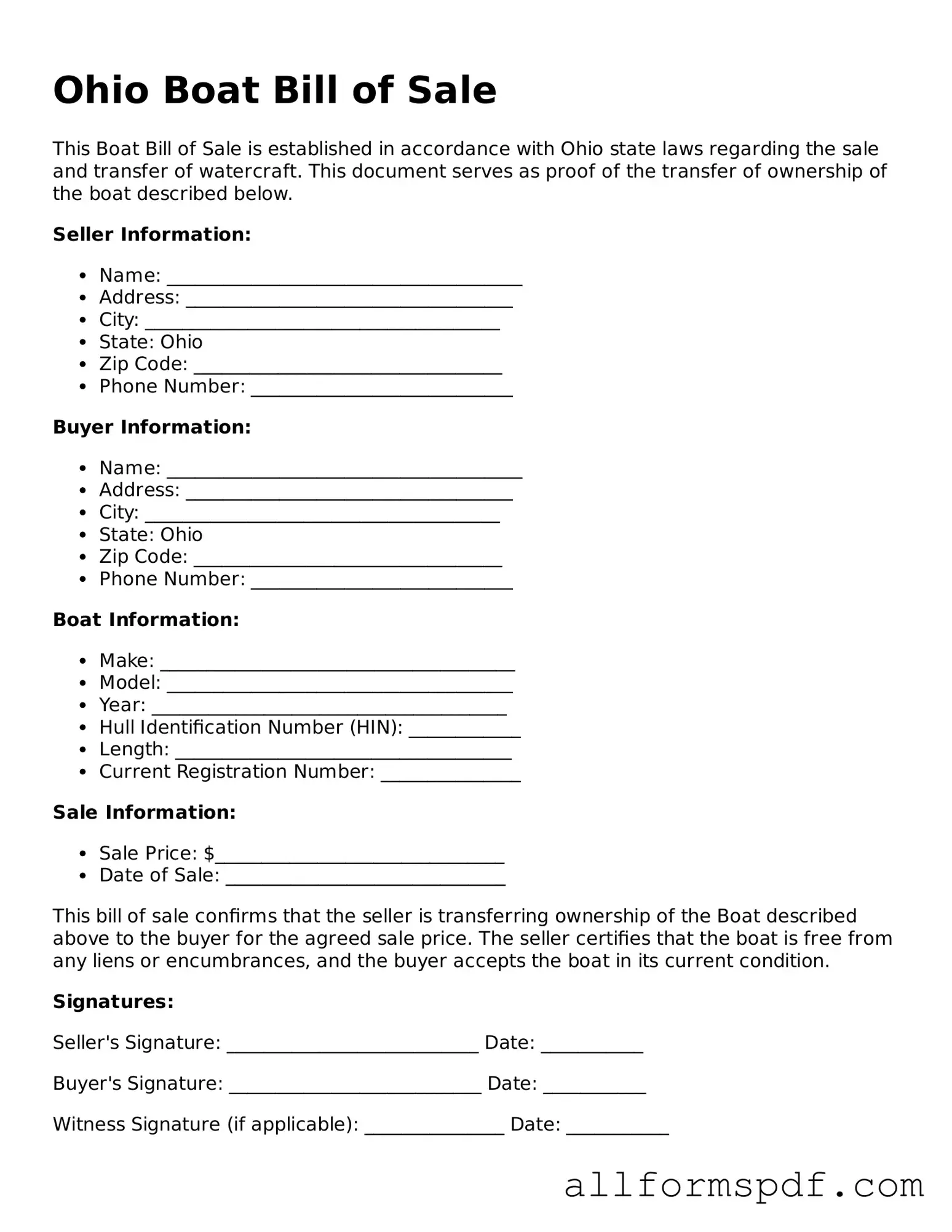Filling out the Ohio Boat Bill of Sale form can seem straightforward, but many people make common mistakes that can lead to complications down the line. One frequent error is failing to provide complete information about the boat. Essential details such as the make, model, year, and hull identification number (HIN) must be accurately recorded. Omitting any of this information can create confusion and hinder the registration process.
Another common mistake is neglecting to include the purchase price. While it may seem trivial, this detail is crucial for both the buyer and seller. The purchase price establishes the value of the boat and may be necessary for tax purposes. Leaving it blank can lead to misunderstandings or disputes later on.
People often overlook the need for both parties to sign the form. A valid Boat Bill of Sale requires signatures from both the buyer and the seller. Without these signatures, the document may not hold up as a legal record of the transaction. Additionally, failing to date the signatures can lead to further complications, as it’s essential to establish when the sale took place.
Incorrectly identifying the buyer or seller is another common pitfall. It is important to provide full names and addresses for both parties. Mistakes in this information can create issues if the new owner needs to register the boat or if any legal matters arise in the future.
Some individuals mistakenly assume that a verbal agreement is sufficient. However, a written Bill of Sale is necessary to protect both parties. A verbal agreement lacks the legal standing that a written document provides, which can lead to disputes over ownership or payment.
People also sometimes forget to include the boat's registration number, if applicable. This number is crucial for tracking and verifying ownership. Not including it can lead to delays in the registration process and potential legal issues.
Another error involves not checking the form for accuracy before submission. Simple typos or errors can lead to significant problems. Taking the time to review the form can save both parties from headaches in the future.
Some sellers fail to disclose any liens or encumbrances on the boat. Transparency is vital in any transaction. If a boat has outstanding loans or liens, the buyer should be made aware. Not disclosing this information can lead to legal issues and financial loss for the buyer.
People often underestimate the importance of keeping a copy of the completed Bill of Sale. After the transaction, both parties should retain a copy for their records. This document serves as proof of the sale and can be critical in case of any disputes.
Lastly, individuals sometimes forget to follow up on the registration process after completing the Bill of Sale. Once the sale is finalized, the new owner must register the boat in their name. Failing to do so can result in fines or legal complications if the boat is used without proper registration.
